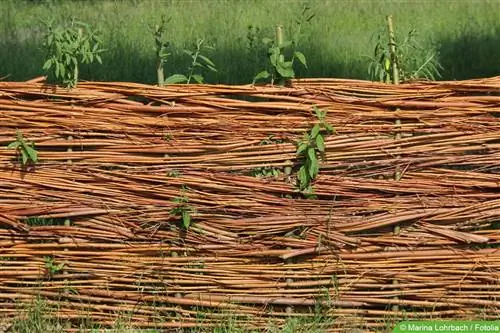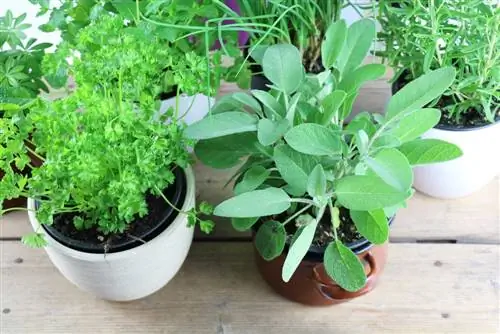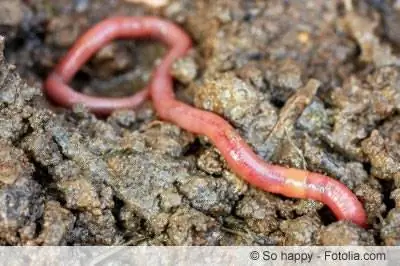- Author admin [email protected].
- Public 2023-12-17 03:39.
- Last modified 2025-01-24 12:45.
Privacy fences are available ready to set up in many colors and made from many materials. As is so often the case in life, however, when making a selection you have to realize that every inexpensive solution is not really of great design value, while the exceptionally good-looking solutions put a significant strain on the household budget. The alternative is a homemade wicker fence:
The advantages of a wicker fence
- Willow fences are very easy to build yourself. You don't need to have any mechanical skills to put up such a fence.
- The braided fences provide a fairly good privacy screen, but they do not completely seal off. So you can still tell if someone is approaching.
- Such a fence also costs incredibly little, or more precisely, it costs nothing at all if you don't value your working time in terms of money.
- In terms of appearance, a wicker fence fits well into all gardens that prefer to see nature rather than standardized plants. It can even be used deliberately to give a somewhat “too tidy” garden a more natural look.
- The first piece of wicker fence does not need to be very wide, because such a fence constantly produces new wicker material, which can then be used to extend the fence.
Disadvantages of a wicker fence
There probably isn't one if you manage to find a pasture somewhere in your area, which is usually not very difficult:
Where do willows grow?
Willows particularly like to grow on river floodplains or in moist areas. In many cases, osiers were deliberately planted in the past, for example by basket weavers who grew new willow bushes or willow trees for the next harvest. They used areas that were often flooded to plant willow crops; these areas could not be used for other crops, and the willows strengthened the ground. In many places you can still find the remains of these willow cultures, the so-called willow keepers, today mostly a small wilderness of willow bushes.
Surely you also know the bizarre-looking pollard willows; the older willows were cut into this shape so that they would produce a good harvest. These pollard willows are still a defining image in some regions today, e.g. B. in the Lower Rhine.
If you don't know a pasture location, you can simply ask your municipality or your city's parks department. Today, these offices often have the task of pruning the pastures as a landscape conservation measure and might be happy if you could give them a little To take over work.
Which pastures are suitable?
There are around 450 different types of willow, of which around 70 grow here. Within a species, the youth and old forms look different, and the pasture also develops different growth forms depending on the altitude and geographical latitude. Since wild willows sometimes cross each other during reproduction, you will usually not be able to determine with certainty which pasture you have just come across.
But since almost all species except the common willow, known from the catkins, are suitable for weaving and the willow is one of the few willows that does not grow in floodplains and swamps, it doesn't really matter to you. At least when it's just a willow fence, it's not a delicate job that depends on the flexibility of the rods.
However, if you plan to use the material produced by your new fence to create wonderful weaving works of art in the future, you need to take a closer look at the wild growth: You can somewhat anticipate the weaving properties of a wild willow by looking at the cut surface of one If you look at the branch, the less pith you can see in the cane, the better the willow is for braiding.
Create a wicker fence
The base material for the fence is best cut at the beginning of March, before life comes back into the tree. You need stronger willow branches with a diameter of approx. 10 cm as “fence posts”. Such a branch should be buried every 50 cm. And thinner willow branches for braiding, any longer branch up to 5cm in diameter can be used. The fence is now braided with the thin rods - once the rod will go around in front of the vertical branch, once behind it, and so on
If you alternately weave in the end and tip first, the fence will be more horizontal; if the tips are only on one side, it will quickly lean towards one side. You should also press the braid down every now and then, then the braid will become denser and more even.
Note for perfectionists: The more regularly the canes are harvested, the more uniform the image that the weave fence will produce will be. But before you spend two days sorting willow branches, remember: you want it to look like nature!
Since willows are typically easy to propagate using cuttings, your willow “fence posts” will usually grow without any problems. You can expect the willows to sprout next year, from then on you can harvest new willow branches every 2 years.
Conclusion
A wicker fence is a brilliant idea to “build” a fence if you like a natural garden: quick, free, self-renewing, just a little work involved.
- If you want to create a really opaque privacy fence, you should plant reeds. The giant miscanthus can be used e.g. B. weave very well into a tight privacy fence.
- A well-grown wicker fence becomes quite stable and can be used, for example, to hang a hammock on it.
- With the right wicker fence planning, you can create several protected corners in your garden that not only offer no visibility, but also keep out wind and too much sun.






